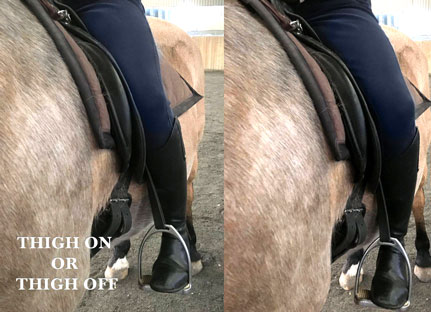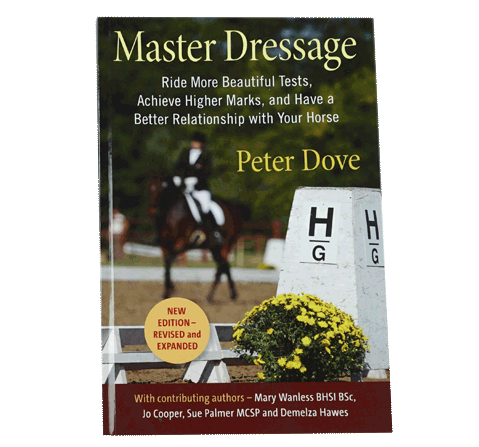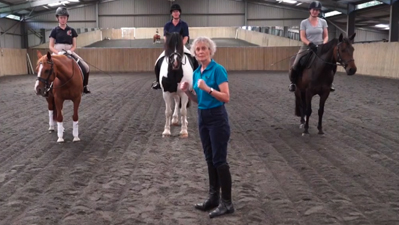DRESSAGE DOS & DON’TS
August 5, 2016
THE MYTH OF THIGHS AWAY FROM THE SADDLE
August 20, 2016WHAT EVERYONE SHOULD REMEMBER WHEN TRAINING HORSES
One of the things worth remembering when training your horse, especially if you are learning too, that this is just as strange for him as it is for you. Both horse and rider must learn new neurological patterns and change existing ones. They must both learn new habits and break old ones. The rider has the luxury of both knowing the reason for these changes and has the ability to choose them. The horse on the other hand is simply trying to do what it is being told in an attempt to please the rider; he has no idea why this is happening or why he feels strange. So it is worth remembering that should your horse get confused, or a little tense, or finds something difficult, it’s not a moment for additional pressure or punishment, but some reassurance in recognition of how strange this must be for him and how you appreciate his efforts.
In the end we must learn to train the horse according to his needs and level, rather than our own personal goals and time lines.
This was made vivid to me when watching Heather Blitz, a Grand Prix student of Mary Wanless, training one of the horses Piaffe. For the benefit of those watching she was explaining what she was thinking and what she was doing. The horse appeared to become a little tense and muddled and of this Heather said “now I would never try to interfere and tell this horse off, or somehow try to pressurise him because I can feel him trying underneath, I can feel him working it out, and I know that this is a process he has to go through”. Sure enough the horse soon began to relax and take better steps.
In general the progression of training should be fairly smooth. If you find yourself hitting a brick wall, getting frustrated or even worse having protracted arguments with your horse, you should step back and do a full review of your skills set and the training program you have for your horse.
In the end we must learn to train the horse according to his needs and level, rather than our own personal goals and time lines.
This was made vivid to me when watching Heather Blitz, a Grand Prix student of Mary Wanless, training one of the horses Piaffe. For the benefit of those watching she was explaining what she was thinking and what she was doing. The horse appeared to become a little tense and muddled and of this Heather said “now I would never try to interfere and tell this horse off, or somehow try to pressurise him because I can feel him trying underneath, I can feel him working it out, and I know that this is a process he has to go through”. Sure enough the horse soon began to relax and take better steps.
In general the progression of training should be fairly smooth. If you find yourself hitting a brick wall, getting frustrated or even worse having protracted arguments with your horse, you should step back and do a full review of your skills set and the training program you have for your horse.
MASTER DRESSAGE – 2ND EDITION
How can the book Master Dressage help you?

- Increase the marks you get by improving your accuracy.
- Improving the fluidity of your tests so you look like a pro.
- Teaching you what the requirements of movements are.
- Explaining what the judges are looking for in tests.
- Translating typical judges comments in plain English.
- Showing you what you should be practicing at home.
- Improving your ability to focus when practicing.
- Explaining typical rider mistakes.
- Shows you how to review your results.
- You get access to 7hrs of training videos and recorded webinars and much much more.

WANT TO READ MORE ARTICLES LIKE THIS?
Check out our membership site where each month you get hours and hours of video. You also get to join in live streamed lessons, watch the HD recordings, chat with us and even join us as we train our horses with commentary. Click the link to sign up below.
https://dressagetraining.tv/tv-membership/
What makes our membership different?
Dressage Training TV breaks down the skill of riding into bitesize chunks. We use rider biomechanics to explain the interaction between horse and rider. We use specific language which dismisses the mystique of dressage, and shows you how things work – logically and clearly. During training we do not limit ourselves to riding to solve our horsey problems. You also learn groundwork, horse massage, rider fitness and much more.
https://dressagetraining.tv/tv-membership/
What makes our membership different?
Dressage Training TV breaks down the skill of riding into bitesize chunks. We use rider biomechanics to explain the interaction between horse and rider. We use specific language which dismisses the mystique of dressage, and shows you how things work – logically and clearly. During training we do not limit ourselves to riding to solve our horsey problems. You also learn groundwork, horse massage, rider fitness and much more.

